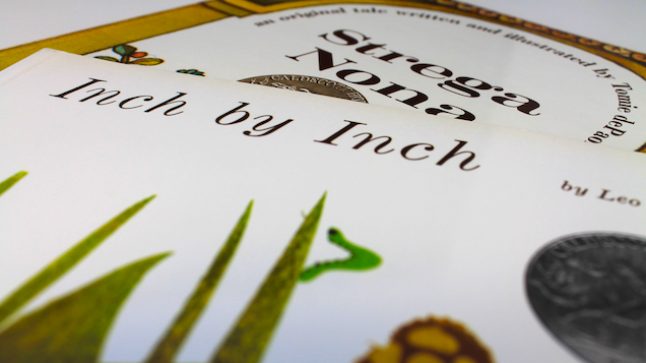Series: Book Ideas
4 Books About Measurement that Spur Children’s Thinking

Big and small, empty and full. Children measure all of the time, even if they’re not using rulers or numbers while doing so. There are many great children’s books about measurement that spur on their natural fascination with the subject. Here are a few of our favorites.
-
Inch by Inch by Leo Lionni
A wonderful illustrator and children’s book author, Leo Lionni describes a peppy little inch worm and his desire to measure an assortment of birds, keeping him out of harm’s way. In the end he needs to outwit a nightingale using his resourceful measuring skills. Creative measuring tools—hands, feet, paper clips—are featured, which can introduce children to the attributes involved with measuring procedures even if they are still working on their counting skills.
-
Just a Little Bit by Ann Tompert
Pastel watercolors, a whimsical tone, and a lot of animals combine in one of our favorite books about measurement. When a tiny mouse and gigantic elephant can’t quite play with the seesaw the way it is meant to be played, it takes help from a zebra, a giraffe, a lion, and a whole host of others to balance the scale. It is a cute romp and a great introduction to weight and measurement.
-
Strega Nona by Tomie dePaola
This timeless tale recounts the story of a grandma witch doctor who takes on an assistant named Big Anthony. An attempt by Big Anthony to replicate a spell to create mounds of pasta in a magic pot results in huge amounts of pasta overflowing into the village. This fun story is a fantastic way to explore capacity in your measurement activities.
-
Life-Size Zoo: From Tiny Rodents to Gigantic Elephants, An Actual-Size Animal Encyclopedia by Teruyuki Komiya
To get kids thinking about ideas like big and small, estimation, and comparison, consider taking a look at this entertaining “encyclopedia.” It features high-quality, life-size photographs of animals displayed on oversize pages. Some pages even fold out to fit larger images. Comparing the size of the animals with each other (or with the readers!) is a good place to start mathematical conversation.